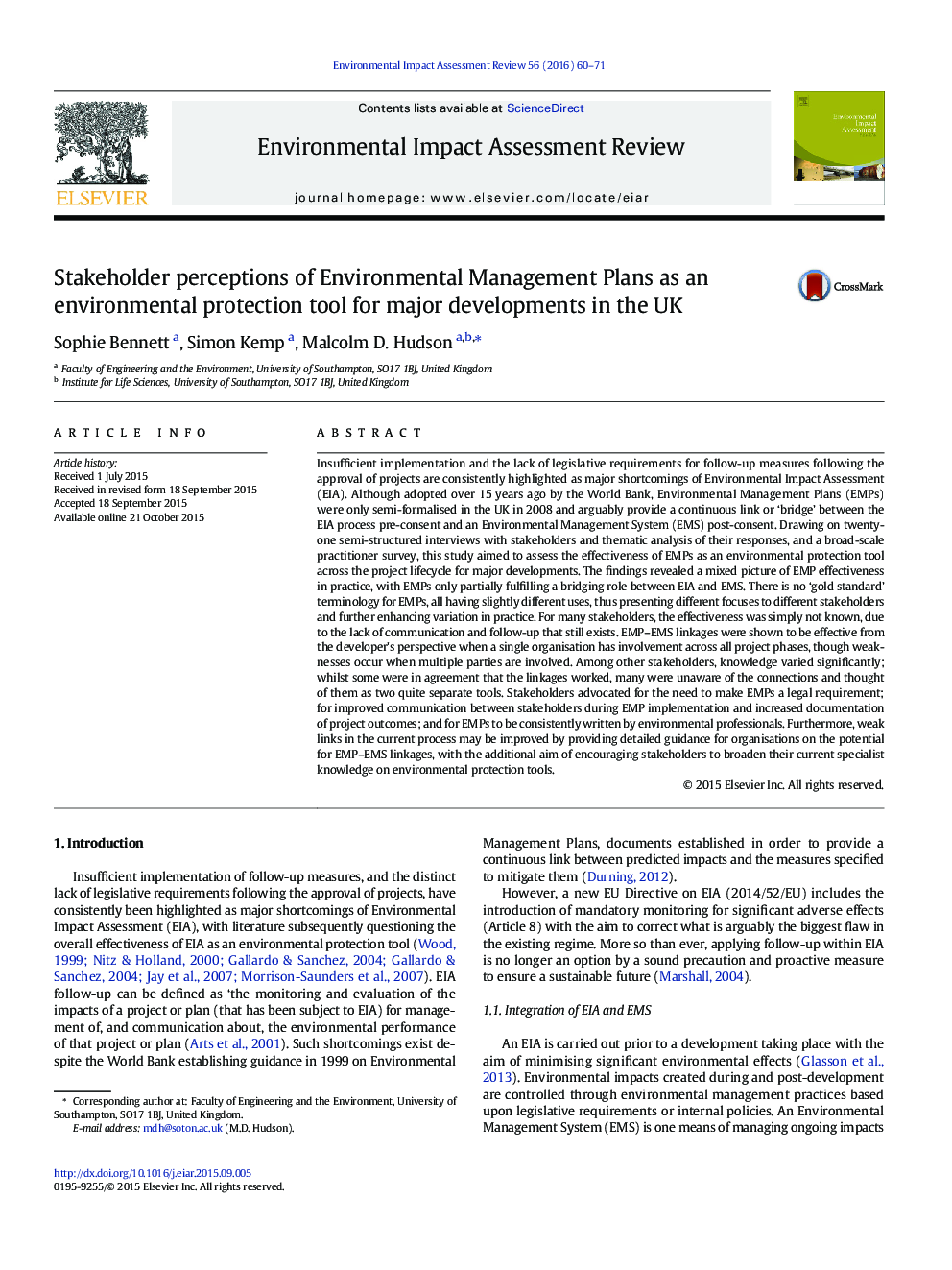| کد مقاله | کد نشریه | سال انتشار | مقاله انگلیسی | نسخه تمام متن |
|---|---|---|---|---|
| 1052675 | 1484989 | 2016 | 12 صفحه PDF | دانلود رایگان |
• We assessed the effectiveness of Environmental Management Plans (EMPs) for major developments, focusing on delivery of mitigation and monitoring.
• EIA and Environmental Management Systems (EMS) post-consent are weakly linked.
• The use of EMPs varies significantly in practise, partly due to the range of terminology used.
• Linkages are hampered by poor communication and follow-up
• More detailed guidance on how EMPs can successfully link with EMS is required
Insufficient implementation and the lack of legislative requirements for follow-up measures following the approval of projects are consistently highlighted as major shortcomings of Environmental Impact Assessment (EIA). Although adopted over 15 years ago by the World Bank, Environmental Management Plans (EMPs) were only semi-formalised in the UK in 2008 and arguably provide a continuous link or ‘bridge’ between the EIA process pre-consent and an Environmental Management System (EMS) post-consent. Drawing on twenty-one semi-structured interviews with stakeholders and thematic analysis of their responses, and a broad-scale practitioner survey, this study aimed to assess the effectiveness of EMPs as an environmental protection tool across the project lifecycle for major developments. The findings revealed a mixed picture of EMP effectiveness in practice, with EMPs only partially fulfilling a bridging role between EIA and EMS. There is no ‘gold standard’ terminology for EMPs, all having slightly different uses, thus presenting different focuses to different stakeholders and further enhancing variation in practice. For many stakeholders, the effectiveness was simply not known, due to the lack of communication and follow-up that still exists. EMP–EMS linkages were shown to be effective from the developer's perspective when a single organisation has involvement across all project phases, though weaknesses occur when multiple parties are involved. Among other stakeholders, knowledge varied significantly; whilst some were in agreement that the linkages worked, many were unaware of the connections and thought of them as two quite separate tools. Stakeholders advocated for the need to make EMPs a legal requirement; for improved communication between stakeholders during EMP implementation and increased documentation of project outcomes; and for EMPs to be consistently written by environmental professionals. Furthermore, weak links in the current process may be improved by providing detailed guidance for organisations on the potential for EMP–EMS linkages, with the additional aim of encouraging stakeholders to broaden their current specialist knowledge on environmental protection tools.
Journal: Environmental Impact Assessment Review - Volume 56, January 2016, Pages 60–71
